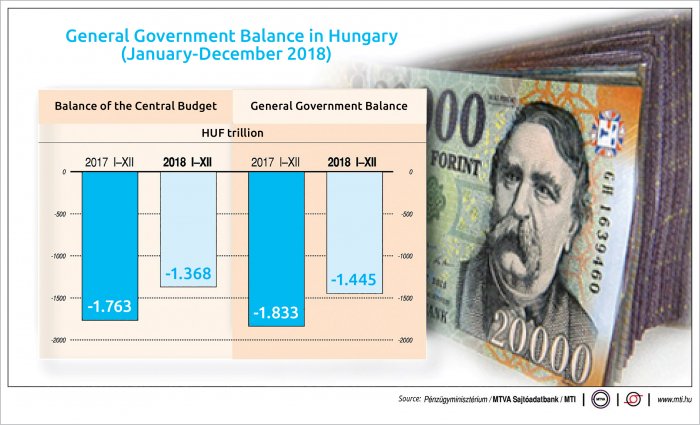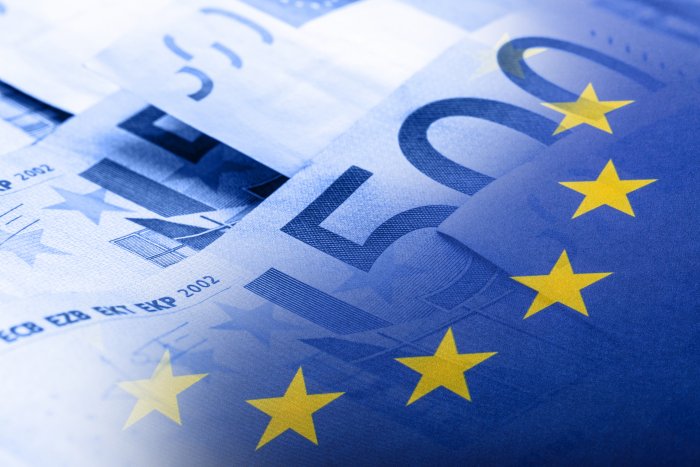MNB Changes Anchor, end of Dovish Policy in Sight?

Another institution has raised its forecast for the expansion of the Hungarian economy last year, along with one of the large international credit rating agencies. In the meantime, a change in Hungarian monetary policy is already on the spring horizon.
Economic research institute GKI raised its earlier growth projection for 2018, to 4.6% on January 28, noting that 2018 “was probably the best year of the decade for Hungary”.
This rate was remarkably high in the EU, the GKI says, noting that the growth cycle is likely to have reached its peak, and the rate of expansion is expected to fall back to around 3.4% in 2019. According to the research institute, expansion continues to be driven primarily by domestic demand.
This year’s GDP projection is still up from a 3.2% forecast GKI released in December. The research institute expects EU transfers to continue to grow in 2019, but puts investment growth at a relatively low rate.
“Although EU transfers will continue to grow in 2019, they will only generate an investment growth of around 5%,” the forecast reads.
As for inflation trends, GKI recalls that inflation was 3.8% in October, and fell to 2.7% in December, which can mainly be contributed to a 12% drop in fuel prices over the two months. However, it was still the third highest rate in the EU.
Core Inflation
Also, the tax-filtered core inflation (which excludes volatile fuel prices) continued to rise, and nearly reached the 3% inflation target of the National Bank of Hungary (MNB) in December. Although fuel prices started to rise again in January, the chances of a somewhat lower year-on-year rise in consumer prices have increased, GKI’s forecast says.
With core inflation inching ever closer to the medium-term goal of the MNB, the central bank has already signaled that it is prepared to tighten its monetary policy.
Analysts prior to the rate-setting meeting of the Monetary Council on January 29 expected the MNB to take a more hawkish stance.
Deputy Governor Márton Nagy had made some comments two weeks ago that linked tightening to a rise in tax-adjusted inflation, excluding food and energy prices, to 3% or more.
It rose to 2.9% in December from 2.7% in November. Some analysts did not rule out that the bank may signal a cut in its FX swap stock, which could lead to a rise in short-term interbank rates, Reuters wrote in advance of the Monetary Council meeting.
However, the MNB left its main interest rates unchanged at its record low of 0.9%, on Tuesday and repeated its commitment to a “gradual and cautious” normalization of monetary policy, but no new clues about timing was indicated.
Anchors Away
Now, all eyes on the March inflation report of the central bank, as the MNB has lately changed its anchor. It no longer keeps an eye out for a possible interest rate raise by the European Central Bank, as weaker economic data of the eurozone now indicates that the ECB is not likely to raise interest rates before 2020.
Therefore, the MNB now looks instead at the inflation trends in Hungary, however, headline inflation is not in the focus anymore; instead, the central bank considers tax-filtered core inflation as the anchor for its monetary policy. This is mainly due to the rather volatile fuel prices, as mentioned before.
The fact that there is no change in the Monetary Council’s tone means only a delay in the possible start of a tightening cycle, analysts say.
The bank’s inflation report in March might be a good opportunity for this, CIB bank analysts said. As the first step of normalization, the MNB might seek to influence market interest rates by narrowing liquidity, and in the next stage (or possibly in parallel), it could modify monetary conditions via its interest rate corridor, Reuters cited analysts as saying.
The council, indeed, has said earlier it is “prepared for the gradual and cautious normalization of monetary policy” but it has also signaled that any tightening would start with adjustments to unconventional policy tools, before any changes to the base rate.
Gergely Suppan, analyst at Takarékbank also noted that the tax-filtered core inflation rate might reach the 3% target in the coming months, therefore normalization could start soon, possibly as early as in March.
Morgan Stanley analyst Pasquale Diana commented that the MNB has kept the possibility of starting a tightening cycle in March on its agenda; however, external factors, such as the more cautious monetary stance by the ECB, might delay this further until the summer.
Numbers to Watch in the Coming Weeks
On February 5, the Central Statistical Office (KSH) will publish the much-awaited December retail trade data; according to expectations, Hungary’s retail sector closed a very good year in 2018. On February 7, December industrial output will be in the spotlight: the first estimate on that day will be followed by the second estimate on February 13. The consumer price index for January will be released on February 12, and this might give further ground for a change in the monetary policy in the coming months. A flash estimate of fourth quarter GDP will come out on February 14.
SUPPORT THE BUDAPEST BUSINESS JOURNAL
Producing journalism that is worthy of the name is a costly business. For 27 years, the publishers, editors and reporters of the Budapest Business Journal have striven to bring you business news that works, information that you can trust, that is factual, accurate and presented without fear or favor.
Newspaper organizations across the globe have struggled to find a business model that allows them to continue to excel, without compromising their ability to perform. Most recently, some have experimented with the idea of involving their most important stakeholders, their readers.
We would like to offer that same opportunity to our readers. We would like to invite you to help us deliver the quality business journalism you require. Hit our Support the BBJ button and you can choose the how much and how often you send us your contributions.








